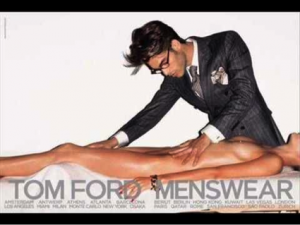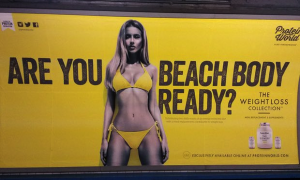Scholar Post- Women in Media
One topic that I found interesting this semester is how women are portrayed in the media. Women are often under-represented and portrayed as sexual, feminine objects in the media (Collins, 2011). They are put into very stereotypical gender roles when they are represented. This is not only on television shows but also across many different media platforms. This has an affect on girls’ self-esteem and the way they view themselves. As children are developing, what they see has a large impact on them. In our society, the media is all around and almost always accessible. What girls are seeing needs to be changed to help them be confident, successful individuals.
In our Module 2 online work we read about how gender roles and occupations are portrayed in the media. The University of Southern California conducted a study that we looked at about key findings in gender roles. The study found that female characters are less prevalent across media compared to male characters (Class 10/9). Women were also seen wearing sexy attire 36.2% of the time in prime-time shows whereas this number was only 8.4% for males. On television commercials, only 14% of females were shown as authority figures, whereas for men this number is 70% (Furnham, 1999). Also, women were more likely than males to have thin bodies and be referenced as attractive. In prime-time programs, women were rarely in high-ranking professions. The under-representation, sexualizing and stereotyping of women happens across media and is a serious problem that affects young women.
Women are under-represented in media but when they are portrayed we often see images like those below. This is because women are more likely to be represented for their body and clothing in media than men (Collins, 2011). Women are sexualized and objectified. The portrayal of women this way gives young girls who see this media the idea that what is important about them is the way they look. The result of this can be detrimental to young girls. When girls see women on television that are the thin-ideal image, they are more likely to be dissatisfied with their body image and invest in their appearance (Grabe, 2008).
Not only do girls think less of them selves physically but also mentally. It has also been found that girls’ self-esteem suffers because of the way other women are portrayed (Collins, 2011). Girls put themselves down because they think they are less than the images they are seeing. Viewing sexually objectifying television predicted the self-objectification of college women a year later and viewing appearance focused shows predicted girls would be less satisfied with their appearance a year later (Grabe, 2008). There has been a decrease in advertisements that are stereotyped on sex in the Western world (Furnham, 1999). However, until there is a larger change these negative effects will still happen to girls.
When looking at research in this area, though, it is important to note that white women were primarily the ones studied and women of color were often excluded (Grabe, 2008). This means that if the studies were done using women of color there may be different results. Also, in South Korea women are not under-represented (Collins, 2011). However, they were still stereotyped. Also, the longitudinal studies were only over the period of one year. Researchers should look at data to see how the effects of viewing certain content can affect girls as they grow up and go into adulthood. Longer studies would likely give more conclusive data. Although I only covered studies that conclude negative affects of media on women, there were also studies that found media had a positive effect on women. This was only found in .05% of the studies, but is interesting nonetheless (Grabe, 2008). Lastly, I focused only on women but men are also affected by gender roles and stereotypes in the media.
When teaching, it is important to look at children for who they are as individuals. Some children need more guidance than others. In Module 2 we watched, read and discussed about how when working with children, the best way to be is authoritative. Authoritative adults have strong discipline and parental involvement. This way, whether male or female, children have a positive example to look up to outside of the media. Another difference educators will encounter besides sex is children with unequal childhoods. For online work we watched “Interview with Lareau (Unequal Childhoods author)”. From that we learned that it is important to remember how children are brought up will affect them. Boys and girls self-esteem may suffer not only because of media but also home life. Educators should be prepared to work with children who are brought up many different ways.
The first video I have attached below shows positive ways women were presented in the media, but also how the media failed women. It also highlights how media failed men, which is something I did not touch on.
https://www.youtube.com/watch?v=596yX2dOFaE
The next video I have added shows how media have presented, objectified, and sexualized women in multiple media outlets.
https://www.youtube.com/watch?v=xNzaHPe7os0
Finally, the third video shows the media bringing light to stereotypes. They look at how the phrase “like a girl” is used and perceived by children of different ages. It promotes confidence in women and is a great advertisement for women of all ages to see and be empowered by.
https://www.youtube.com/watch?v=XjJQBjWYDTs
In conclusion, the way women are being represented across media is continually in a sexual, objectified light. They are not only being under-represented, but represented in a poor manner. This can have negative affects on the way girls see themselves and their self-esteem. There is bias in the data looked at because it only focused on white women. Also, some studies should be looked at longer before drawing conclusive results. There are some positive advertisements aimed at changing stereotypes women face and the way girls see themselves. Overall though, the media needs to change its portrayal of women to help change women’s portrayal of themselves.
References
Collins, R. L. (2011). Content Analysis of Gender Roles in Media: Where Are We Now and Where Should We Go? Sex Roles, 64(3-4), 290-298. doi:10.1007/s11199-010-9929-5
Furnham, A. & Mak, T. Sex Roles (1999) 41: 413. doi:10.1023/A:1018826900972
Grabe, S., Ward, L. M., & Hyde, J. S. (2008). The role of the media in body image concerns among women: A meta-analysis of experimental and correlational studies. Psychological Bulletin, 134(3), 460-476. doi:10.1037/0033-2909.134.3.460



on December 12th, 2016 at 4:00 pm
Erin, I completely agree with you that women are given non realistic expectations of what they should look like and behave like, I found your take on things refreshing and very well put. It is unfair that young girls are given this false image to look up on. Personally as a teen growing up I always thought being a model or someone famous was the best thing someone could be in life, but since high school and above its easy to see that successful confident women can be found at any occupation or at any weight, height or hair color. I really agree with how you interpreted the Ads in media and how they are extremely biased and not life like. Great post Erin, it really got me thinking about ways to change how young girls see themselves.
on December 14th, 2016 at 9:23 pm
Erin,
I really enjoyed reading this post! I think you chose a really great topic for your Scholar Post, as this is a very prominent issue in today’s society. I actually wrote a paper on this topic for my English 101 class a few years ago and found very similar results. We are constantly connected to media, and like you said, women are often portrayed in sexualized and objectified ways. This leads to low confidence and low self-esteem for young girls, which can in turn lead to self-destructing behavior., such as eating disorders. As future educators, it is important that we are aware of the potential problems that our students can be dealing with that could affect their learning or behavior.
Thank you for sharing the images and other outside resources to help show how women are portrayed! Great post!! 🙂